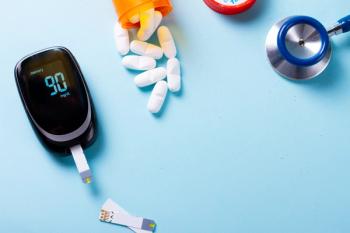
People with HIV Show Significantly Low Pneumococcal Vaccination Rates
Researchers wanted to better understand prescribing patterns of pneumococcal vaccines for people living with HIV in a tertiary care hospital.
With alarmingly low rates of pneumococcal vaccination among people living with HIV (PLWH), researchers identified an urgent need to improve uptake in this population for the benefit of public health.
“The human immunodeficiency virus (HIV) is a retrovirus that specifically targets and infects the cells of the immune system,” wrote authors of a study published in the Journal of Infection and Public Health.1 “PLWH are at an elevated risk of developing opportunistic infections, including pneumococcal pneumonia, due to the altered state of their immunity.”
PLWH are more susceptible to a variety of diseases aside from those related to pneumococcal infections. However, with approximately 39 million PLWH globally—alongside lacking pneumococcal vaccination rates and knowledge of the vaccine’s effects—improving viral disease outcomes within this population is crucial.
READ MORE:
“Immunization is a relatively easy and cheap medical prevention to reduce morbidity and mortality attributed to vaccine-preventable diseases in either healthy or immunocompromised people,” according to authors of a study published in Human Vaccines & Immunotherapeutics.2 “PLWH have increased incidence and mortality due to invasive pneumococcal disease (IPD), compared to the background population.”
After exploring previous studies, researchers of the current investigation found that the general populations of PLWH in many countries showed significantly low pneumococcal vaccination rates. They also discovered significantly low rates regarding physicians’ understanding of PLWH’s vaccination needs.1
The currently available vaccines for pneumococcal disease prevention include pneumococcal conjugate vaccines (PCVs) and pneumococcal polysaccharide vaccines (PPSVs). While pneumococcal vaccination rates for PLWH are lacking in many countries across the world, researchers of the current study decided to focus on a specific location.
“The purpose of this study is to investigate the prescribing patterns of pneumococcal vaccines for PLWH at a tertiary care hospital in Riyadh, Saudi Arabia,” they continued.1 “This investigation is prompted by the lack of available data on the prevalence of pneumococcal vaccination in Saudi Arabia.”
Researchers gathered records from an HIV clinic at a tertiary hospital in Riyadh and included patient data spanning from January 1987 to December 2022. They collected patients’ demographics, disease history, and antiretroviral therapy (ART) regimens.
Following the researchers’ data collection, a total of 346 PLWH (81% men; median age, 45 years; 54% single) were included in the study. Aside from less frequent conditions like chronic kidney disease (0.28%) and pulmonary disease (1%), 3% of the study population reported having hypertension, and another 3% reported diabetes. Furthermore, 4% had tuberculosis and 3% had pneumonia.
“Pneumococcal vaccination coverage among PLWH was notably low, with 98.6% (n=341) reporting no history of pneumococcal vaccination,” they wrote.1 “Only a minute fraction (0.56%, n=2) had completed the full PCV13-PPSV23 series, while another small but distinct group (0.84%, n=3) had received a single dose of PCV13.”
Researchers discovered alarmingly low vaccination rates among PLWH despite 98% participating in ART and 99% making regular HIV clinic visits. In turn, due to low pneumococcal vaccination rates, PLWH in Riyadh also had significantly high rates of IPD, ranging from 379 to 820 instances per 100,000 each year.
“Notably, PLWH have a persistently immunodeficient state and remain at a 30-fold higher risk of IPD than healthy adults. These findings highlight the importance of raising physician awareness and improving pneumococcal immunization rates for PLWH,” wrote the authors.1
There are low pneumococcal vaccination rates across many countries, and PLWH are a specific target for vaccine uptake because of their immune system deficiencies. As PLWH often visit their HIV clinics—and the general public visits community pharmacies almost twice as often as local physicians3—an opportunity for independent and specialty pharmacists to facilitate improvements in pneumococcal immunization rates.
“Offering the vaccine at the point of care and orienting PLWH on the importance of vaccination as a disease prevention strategy, identifying those eligible to receive it, was an important action carried out by the institution together with the nursing team, as a strategy to facilitate access to vaccination,” wrote authors of a study published in the University of Sao Paulo’s Journal of School of Nursing.4
Pharmacists have an opportunity to be the health care providers responsible for bolstering pneumococcal vaccination rates around the world. And while pharmacists are knowledgeable about the vaccine and can improve access to it, researchers suggested patients and physicians need further education regarding the pneumococcal vaccine’s importance for PLWH.
“This study highlights the urgent need for enhanced efforts to boost pneumococcal vaccination rates among PLWH, who face a significantly elevated risk of IPD,” they concluded.1 “To combat this critical public health issue, interventions such as provider and patient education, personalized counseling, and targeted vaccine promotion campaigns may be necessary. Future research should focus on assessing the effectiveness of these strategies and identifying solutions to overcome vaccination barriers within this vulnerable population.”
READ MORE:
Pharmacy practice is always changing. Stay ahead of the curve: Sign up for our
References
1. Binsuwaidan R, Alghamdi EM, Otaif EA, et al. Cross-sectional investigation of pneumococcal vaccination patterns in HIV patients at a tertiary care hospital in Riyadh, Saudi Arabia. J Infect Public Health. 2025;18(7):102783. https://doi.org/10.1016/j.jiph.2025.102783
2. Larsen L, Nguyen MTT, Johansen IS. The coverage of influenza and pneumococcal vaccinations among people living with HIV in Denmark: a single-center cross-sectional survey. Hum Vaccin Immunother. 2021 Aug 3;17(8):2700-2705. doi: 10.1080/21645515.2021.1894895.
3. Valliant SN, Burbage SC, Pathak S, et al. Pharmacists as accessible health care providers: quantifying the opportunity. J Manag Care Spec Pharm. 2022 Jan;28(1):85-90. doi: 10.18553/jmcp.2022.28.1.85.
4. Parmejani PDSS, Picone CM, Alves APPDS, et al. Facilitating access to pneumococcal vaccine for people living with HIV: an experience report. Rev Esc Enferm USP. 2023 Jan 6;56:e20210563. doi: 10.1590/1980-220X-REEUSP-2021-0563en.
Newsletter
Pharmacy practice is always changing. Stay ahead of the curve with the Drug Topics newsletter and get the latest drug information, industry trends, and patient care tips.






































































































































